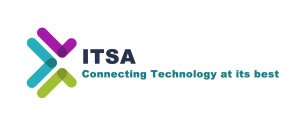 Lars Reger, VP automotive strategy, new business and R&D at NXP Semiconductors talks to Neil Tyler about what he sees as a ‘revolution’ in automotive electronics and the rise of the connected car. According to Reger the key trends impacting electronics are connected mobility and the need to reduce fuel consumption and emissions, but these changes will also impact on the traditional automotive ecosystem, with consumer technologies, industrial applications, and mobile & computing elements entering the game.
Lars Reger, VP automotive strategy, new business and R&D at NXP Semiconductors talks to Neil Tyler about what he sees as a ‘revolution’ in automotive electronics and the rise of the connected car. According to Reger the key trends impacting electronics are connected mobility and the need to reduce fuel consumption and emissions, but these changes will also impact on the traditional automotive ecosystem, with consumer technologies, industrial applications, and mobile & computing elements entering the game.
Neil Tyler: NXP talks of a revolution in electronics in the automotive space. How would you describe that revolution; what are the key trends and how is NXP responding?
Lars Reger: The automotive industry is facing some key changes driven by two main trends: connectivity and efficiency. Connectivity comes from a desire for people to be always connected, even when they are in the car. Connected mobility will bring more safety, convenience and entertainment while on the road. This trend is fuelled by the need to solve the congestion problems in megacities – by introducing car sharing concepts, intelligent traffic management, inner city zones, or by giving priority to inner-city busses, to name just a few.
The second trend is the need to reduce fuel consumption and emissions. We at NXP have leveraged our experience in sensors and vehicle networking to optimise the overall energy efficiency in vehicles. We’ve researched how to improve performance in things like drive train and have used electronic control units to replace bulky mechanic and hydraulic systems. With this we have achieved significant CO2 reductions. Further potential for CO2 reduction comes with the introduction of affordable LED lighting for front and tail lights, with telematics for intelligent traffic management, as well as from high-precision sensors and smart networking ICs.
With these trends, the automotive industry also sees a lot of changes in the traditional automotive ecosystem, with consumer technologies, industrial applications, and mobile & computing elements entering the game. We are excited to be a part of these developments.
NT: What are the main automotive products NXP is focused on and how are you using them to position yourself in the automotive space?
LR: Our portfolio can easily be summarised under one headline: NXP connects the car!
Let me explain this: Our strategic focus is set on providing all the electrical interfaces to connect the car to the outside world, more exactly this means from car-to-car (C2C), car-to-infrastructure (C2I), car-to-portable, and also the insides of the car. Key applications are therefore car entertainment, in-vehicle networking, and car access – in all of these we are the global market leader. Apart from that we are number three globally in the magnetic sensors business and provide power MOSFETs, as well as Automotive Logic, Display Drivers, Interface Products, and Small-Signal Discretes.
NT: What products is NXP developing in response to the growing need and demand for the connected car?
LR: NXP delivers three main technologies for the connected car: C2C/C2I, telematics, and NFC.
For C2C and C2I we work with Australian-based Cohda Wireless to achieve reception levels far beyond what any conventional reception device could ever achieve. This is currently being tested in a variety of field trials around the world, including U.S., Germany, France, and Singapore. By connecting cars wirelessly with each other and with the infrastructure around, the car accident rates can be dramatically reduced.
NXP’s telematics solution “ATOP” combines GPS, GSM / GPRS mobile communications for advanced security and in-car connectivity. One popular use case is the eCall automatic emergency call system. In the event of a serious accident, the device would automatically set off a call to the nearest emergency service. This feature will be binding for all cars in the EU from 2015. This same compact telematics solution can also cover location-based services – a service which will become inevitable with the rise of the electrical car. It books and directs you to the next petrol station while allowing cash-free and secure payment for the services. It also covers flexible GPS-based road pricing, stolen vehicle tracking, or authentication in car sharing systems. So you see: one solution for a variety of use cases – a great opportunity for the industry. The NXP solution has been integrated in a variety of car makers around the world by now.
Personalisation is another top discussion in the industry. This is why we are promoting NFC for automobiles. NXP has co-invented NFC with Sony – a technology that has conquered a multitude of smartphones in the past few months and we’ll see it everywhere in all kinds of end devices in the future. What does it bring to the car? By just a touch of the smartphone to your car key, you can use the smartphone to monitor the status of your car – from maintenance status, door locked yes/no function, car finder, and many more. And with just another touch of your smartphone to the car entertainment station in the car, you can customise all your car settings – from favourite music, to favourite mood light settings, seat adjustment or personal contacts. A cool feature, especially when you think of car sharing.
NT: Standards and compliance are crucial in the automotive market – what specifications are you having to address and how are they impacting on the development of new products?
LR: There are quite a few new enhancements of existing in-vehicle networking standards that we see arising, e.g. CAN-FD for higher data rates and CAN Partial Networking for energy efficient networks. Beyond that, the most important to mention are Ethernet, digital radio broadcast reception, or IEEE802.11p for C2X.
Ethernet is interesting as it will allow a new quality of entertainment and safety functions that require high-bandwidth data networks. These are infotainment and safety cameras, for example. NXP is adopting a standard called BroadR Reach – which offers high-performance bandwidth and a low-cost cabling solution. Borrowed from the consumer and industrial world, the automotive manufacturers therefore apply a standard that has been tested and proven already in billions of electronic devices in use today. To drive this standard, a high effort in standardising is needed. We are founding member of the OPEN Alliance Special Interest Group, encouraging wide scale adoption of Ethernet in the car. Over 81 leading including car manufacturers such as BMW, Hyundai, Jaguar Land Rover, Renault, and Continental are part of this group.
Digital radio reception in car entertainment bears the challenge that the past years have brought about a multitude of regional standards globally. Obviously, the car makers cannot afford to have individual car entertainment solutions per region. To save on logistics and development efforts, NXP has strongly invested in software-defined radio solutions, allowing one hardware platform for all digital and analogue standards. With the increasing importance of digital radio, this will be a strong competitive edge for NXP.
IEEE802.11 p for car-to-car and car-to-infrastructure communication is another new standard. What it bears in common with the examples mentioned before is that no company can tackle this alone. It needs industry alliances, lobbying, and a lot of testing to prove the technology right.
NT: There are significant regional upheavals, with China emerging as a major automotive innovator. How has the Chinese market changed in the past few years and in which areas are they particularly strong? How can Europe respond?
LR: While NXP is global semiconductor company with operations in more than 25 countries, some of our most important growth opportunities come from Asia. There is a variety of new market participants with strong ambitions and limited R&D know-how. Recently we have therefore decided to move our automotive sales and marketing headquarters to China and founded an Automotive Innovation Center in Shanghai to be able to quickly serve the customer needs. Fast response is a key factor for our success in Asia: With a lot of new Tier1s and OEMs surfacing in the region, there is a strong hunger for know-how. We have business developers and application engineers right there to serve these needs and help with design-ins. This excellent customer support pays off. We have a strong growth in China, as well as in Asia as a whole based on this. Forming close partnerships and learning from each other is important.
NT: Looking into the future how is the automotive sector likely to develop over the coming 5 years? How will automotive companies look to differentiate?
LR: A shaping factor in the next years will be the global infrastructure problems in the world’s megacities. The traffic infrastructure often looks like it is collapsing under the weight of exploding population growth. Congested roads, traffic noise, the risk of accidents and general stress are all part of our daily urban lives. Intelligent traffic management and efficient public transport systems will be required to ensure the future of mobility in such crowded urban areas. This is why NXP is successful with its strategy of connecting the car. Intelligent automobiles can master today”s traffic problems. Cars that “think” can take a load off the driver by figuratively “taking the wheel’, for instance when it comes to choosing the right route or driving in an energy-efficient manner. This intelligence is facilitated by networking systems in the car and by extending this network wirelessly to the infrastructure. NXP’s Automotive Telematics Onboard-unit Platform (ATOP) and IEEE802.11p CarITS platform give vehicles the ability to interact and exchange information with their environment, including for car-to-car and car-to-infrastructure communication.
At the same time, NXP is working on realising mobile ticketing as an application for NFC-enabled smart phones. This is then just a first step towards implementing a new vision in traffic and transportation for smart cities. From a technical point of view, it is already possible for a cell phone to combine in one electronic device the functions of an identity card, driver”s license, credit card and various keys, including home, car or hotel keys, as the Google Wallet (co-developed by NXP) already proves. This makes urban mobility concepts imaginable in which the cell phone, as a densely integrated communication platform, selects the optimum kind of transport. A destination chosen by cell phone navigation can be approached, depending on the traffic situation, by public transport, taxi or car-sharing rental. The cell phone acts as the means of payment for a bus ticket and taxi charge or even opens the door of a shared rental car parked nearby, conveniently authenticating the driver with its credentials securely stored in a secure element provided by NXP.
In such a mobile vision, NXP’s NFC and ATOP technologies enable implementing a variety of applications that simplify and improve urban mobility. Asian smart cities have a pioneering role to play here. In this smart urban mobility vision, the car is no longer the classical status symbol of the past, but the convenience of a cities’ resident. Without lengthy planning, the most efficient means of transport can be chosen and paid, guiding the way to a paradigm shift that benefits both residents as well as municipalities of smart cities.
 CIE Components in Electronics
CIE Components in Electronics



